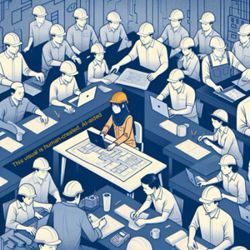The importance of AI’s role in various industries, including agriculture, is noted in the National AI Roadmap 2021-2025.
It is one of the five national focus points in the comprehensive plan for developing and implementing AI technologies in Malaysia.
The roadmap serves as a guide for Malaysia’s journey towards becoming a global leader in AI, with the aim of ensuring that the benefits of AI are shared across all sectors of society.
There are essentially two types of AI – generative and analytical – and both are useful for those in agriculture, said Prof Dr Siva K. Balasundram from the Universiti Putra Malaysia (UPM) Faculty of Agriculture.
“Generative AI can be useful for farmers looking for information on how to apply knowledge to benefit their farms or plantations.
“The predictive power of AI can be used to analyse the large volume of data on pests and diseases, for example, to create algorithms that can be ‘fed’ to a robot to help manage the crop more efficiently.
“Now, with IoT embedded into gadgets, devices and machines, everything can be automated,” he said.
AI, however, can be used for more than just to increase crop yield, added Prof Siva.
AI’s predictive power, he added, can be harnessed to optimise resources, reduce cost and help manage risk.
“Everything – water, fertiliser, pesticide or animal feed – that we apply to the plant, must be in precise quantities.
“At the moment, there is no proper control over the amount of resources being used, which results in a lot of wastage.
“The crop may still thrive but this inefficiency translates to unnecessary costs,” he said, adding that the improper management of resources can cause pollution to the soil and water as the excess of substances like fertilisers and pesticides can seep into the ground and travel to the waterways.
Assoc Prof Dr Mohamad Shukri Zainal Abidin from the Control and Mechatronics Engineering Department at Universiti Teknologi Malaysia (UTM) Electrical Engineering Faculty, said using AI ensures the knowledge of experienced farmers does not disappear as all that information can be turned into algorithms.
Precision farming, which is gaining traction locally, can play a big part in cost reduction in the agriculture sector, he added.
But the high costs involved, said UPM Faculty of Agriculture senior lecturer Dr Clement Roy de Cruz, is a deterrent among local agriculture communities who would otherwise embrace AI.
They would need to invest in capital expenditure and they simply do not have the funds, he said.
“There is also the maintenance cost and shelf life of the devices to consider.
“It’s worse in aquaculture as the probes have go into the water, significantly shortening their maintenance and shelf life cycles.
“Another challenge is good Internet connectivity, which is a must. Most of the farms are in rural areas. This has to be addressed if we want AI to drive agriculture,” he pointed out.
While precision farming may be growing in popularity, Mohamad Shukri said the AI being used still has some way to go.
“One clear advantage of using AI in agriculture is its ability to make sound decisions. This is a particularly complex process in the agriculture sector because there are three key factors to consider in every round of cultivation, namely, the plant’s characteristics, the resources and the environment.
“With AI, farmers can have better control and management of their crops or livestock yield and quality. Farmers want to adopt technology but many lack the funds and access to technologically-skilled talents,” he added.
This is where our universities and technical and vocational education and training institutions have a role to play.






































